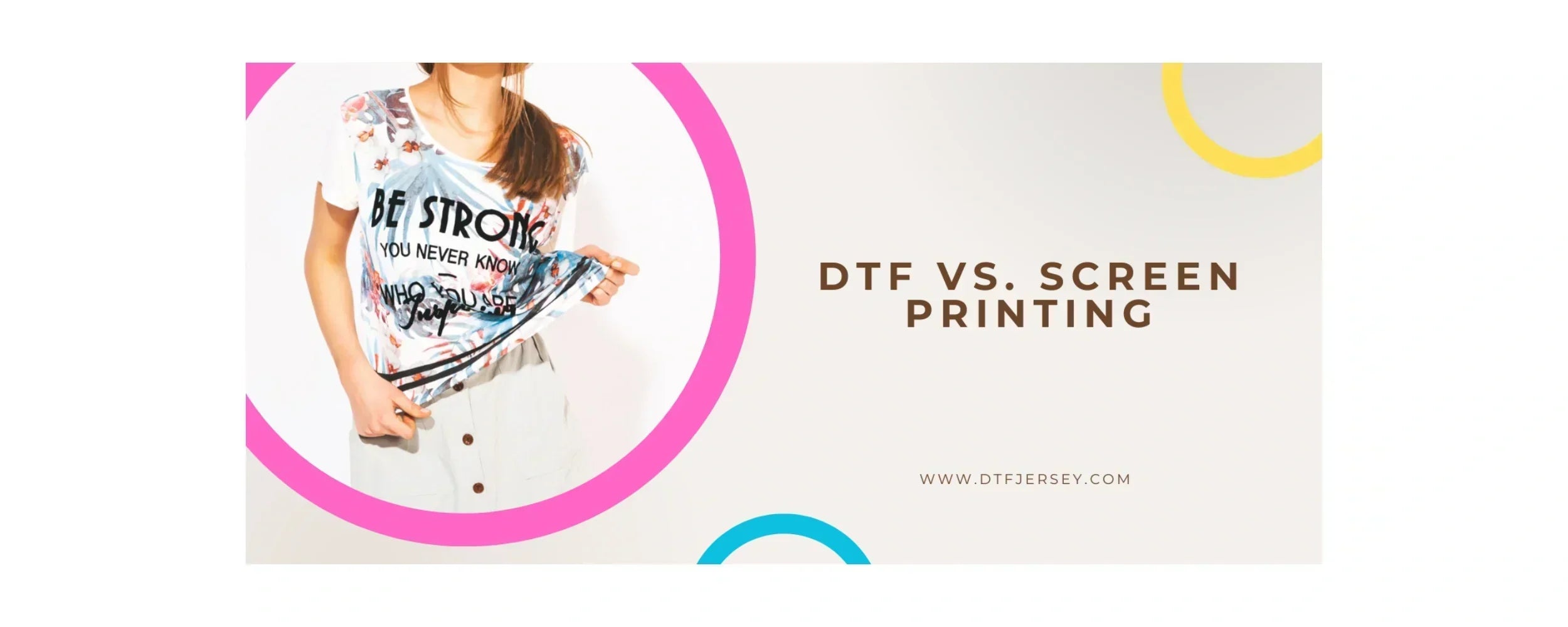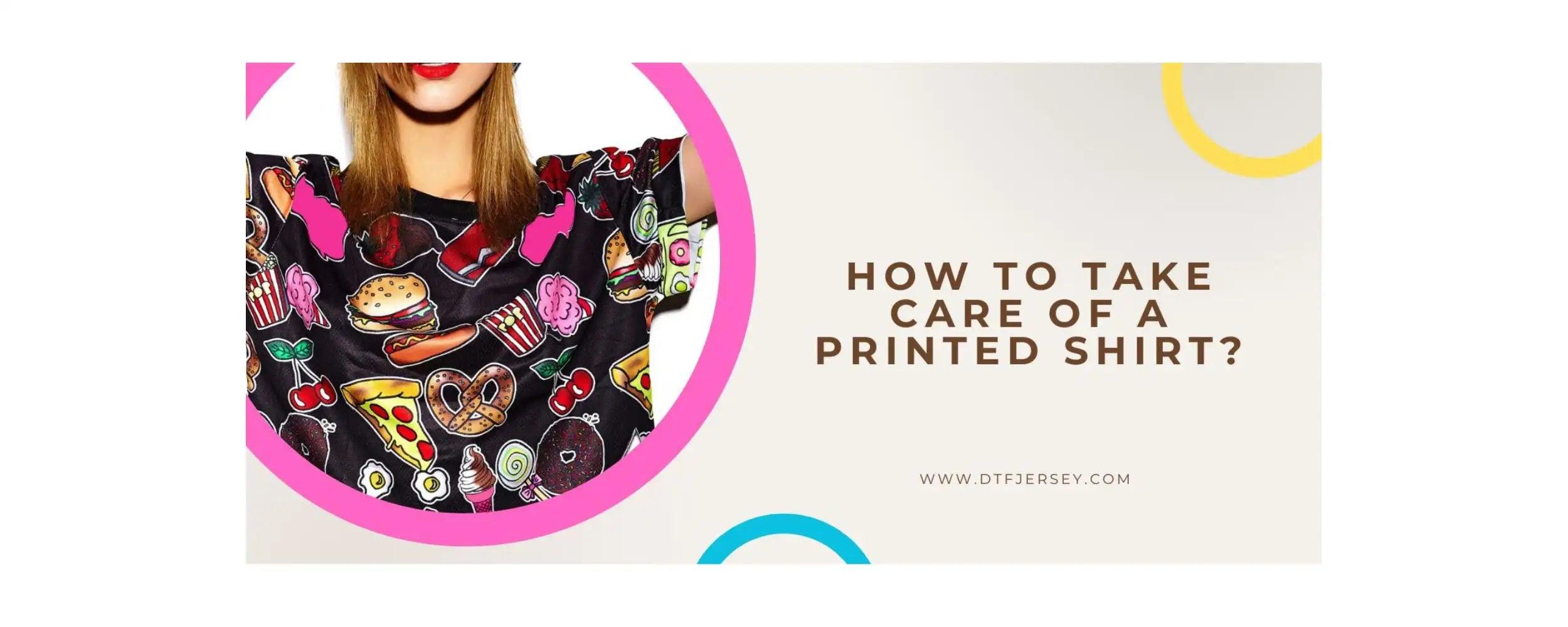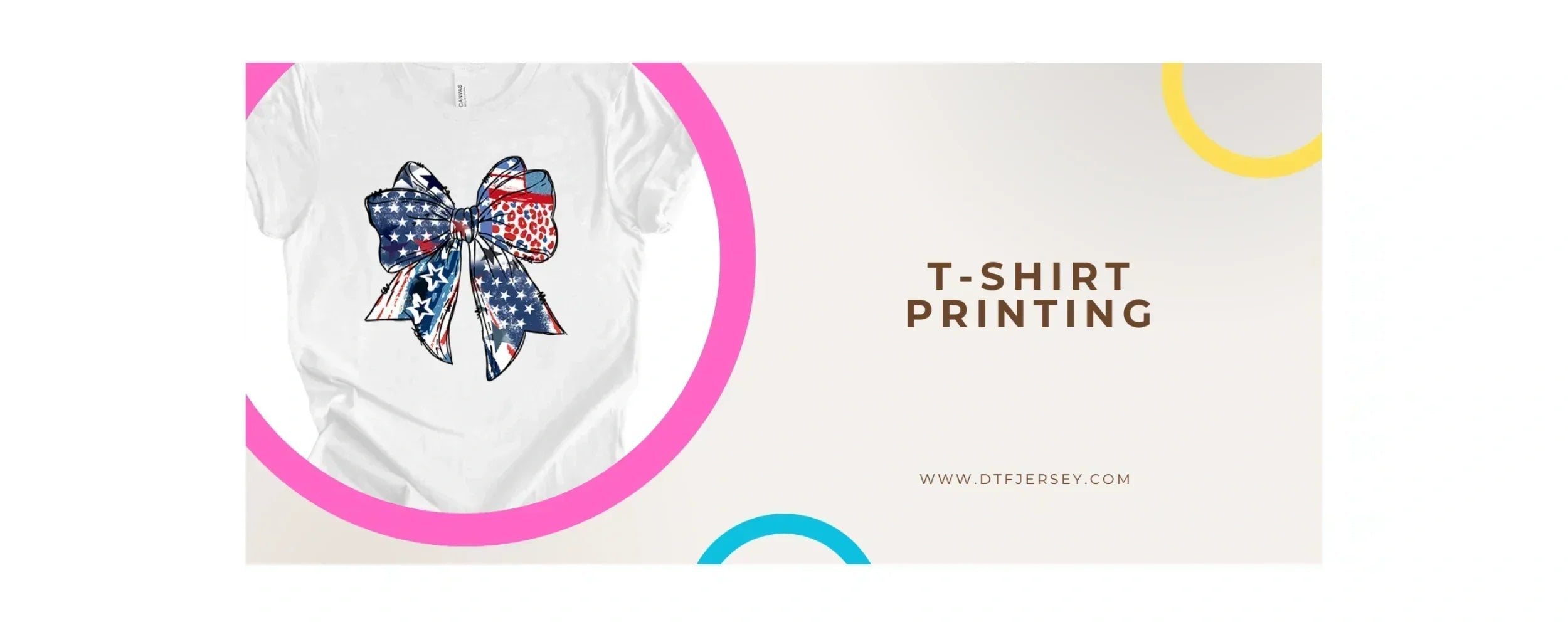
DTF vs. Screen Printing: Which is Better?
DTF and screen printing are ideal printing methods for different expectations and both offer various advantages. Direct-to-film transfer is preferred for detailed and colorful designs, while screen printing is suitable for durable prints. DTF offers flexibility since it can be used on many different types of fabric.
The other method has been used for years for durable and large-scale print orders. At this point, you should consider factors such as design, order, and durability to decide which is better screen print transfers vs DTF.
What Is the Difference Between DTF and Screen Printing?
The most important difference between DTF vs screen print is the way it is applied. Direct-to-film, as a digital printing method, prints the design directly on the film and applies it to the fabric.
Screen printing, on the other hand, is a technique that has been used for years and involves the application of ink to the textile surface using molds and stencils. This technique is known for its unique traits, particularly regarding its longevity, color options, and affordability. Other important differences between DTF vs screen printing are as follows:
Durability
Screen printing is a method that offers more durable printing solutions than DTF. The process applied with thick and strong inks increases the permanence of the designs. Accordingly, it does not show color loss and abrasion in long-term use.
DTF, on the other hand, allows the print to be transferred to the garment by heat transfer and is less durable than screen printing. Since the ink is spread in thin layers, it is susceptible to frequent washing and abrasion.
Print Quality
When it comes to print precision and detail, DTF surpasses screen printing. This advantage comes from its enhanced capability to deliver sharp details and rich, vibrant colors. The screen printing method offers more limited results in terms of special color transitions and fine details. It usually allows the creation of large prints and enables fast production on large surfaces.
Versatility
DTF is a flexible and versatile alternative as it can be applied to a variety of fabrics. Direct-to-film transfer on textiles such as cotton, polyester, linen, and leather offers customized solutions for every requirement. The primary substrates for screen printing are fabric and paper. It is an alternative that is generally compatible with cotton and polyester and offers limited use on different fabric types.
Cost
DTF is a more costly printing solution than screen printing. This is because a special film is used for each design and the processes are detailed. Equipment such as special adhesives, DTF inks, and printers also have an impact on prices.
Screen printing, on the other hand, offers a more cost-effective solution as it basically involves screen and ink materials. However, large-scale order requirements may require more equipment and the production cost will increase accordingly.

Production Speed
DTF transfer is produced faster than screen printing. This is because it prints the colors on the film at the same time and performs the process directly without the need for drying time.
This is because screen printing creates a special screen for each color layer and has an additional drying time. It meets the requirements of large-quantity printing but offers lower productivity than DTF in terms of speed.
Color Range
DTF vs screen printing offers different characteristics in color range. Direct-to-film transfer offers ideal solutions for designs with vibrant and saturated colors. In screen printing, this feature is limited, and special tonal transitions can be achieved with additional color layers. At this point, DTF transfer offers the possibility to reflect the desired color tones in a wide range and in detail.
Material Compatibility
DTF vs screen printing are two different methods that are compatible with different materials. Both alternatives offer effective results on almost every product depending on the ink used. At this point, DTF transfer is more compatible with polyester, cotton, linen, leather, and blended fabrics.
Screen printing, on the other hand, usually produces design results limited to cotton and polyester textiles. This method is more compatible with materials such as cardboard, felt, paper, glass, and wood.
Detail and Complexity
One of the main differences between DTF vs screen printing is design detail. At this point, direct-to-film transfer provides precise color transitions and conveys complex details. In this way, even minimalist prints are printed clearly and flawlessly. In the screen printing method, prints are designed in large sizes. Consequently, it can be hard to obtain the expected results in projects that are tiny or highly detailed.
Environmental Impact
The environmental effects of DTF and screen printing vary, primarily depending on the materials involved. Screen printing, the traditional printing method, is applied with solvent and chemical-based inks. Therefore, it causes the emission of more harmful substances to the environment. DTF transfer uses water-based inks and offers a more environmentally friendly application.
Maintenance & Care
DTF transfer is a digital printing method that requires low maintenance. With fewer mechanical parts, the risk of failure is minimal. In contrast, screen printing involves more upkeep—not just for the equipment, but also for the care of a printed shirt, as it may require special handling after the printing process..
Which is Better For Small Batch Orders: DTF or Screen Printing?
DTF transfer offers better printing solutions for small-batch orders. Direct-to-film transfer, characterized by fast set-up and production time, simplifies the ordering process. Screen printing, on the other hand, takes a long time to set up and is more suitable for large print orders. This is because DTF transfer prints the colors on the film at the same time and performs an efficient process.

Is DTF Printing More Durable Than Screen Printing?
DTF printing generally offers lower durability in comparison to screen printing. This is because screen printing penetrates directly into the fabric surface and the inks are spread in thick layers. In this way, the printed garment retains its durability for a long time despite repeated washing and abrasion. DTF printing can also extend the lifespan of designs, subject to proper care and the use of quality materials.
Which Method Offers Better Color Vibrancy?
DTF transfer achieves a higher level of color brilliance than screen printing. As a digital technique, direct-to-film transfer works with a special printer and ink, so it perfectly reflects tonal gradations. As a result, artworks, photographic prints, and geometric patterns that appear mixed appear more clearly.
In contrast, screen printing is more limited in achieving smooth color transitions. Since this method uses a separate screen for each fabric, it is extremely difficult to achieve different color gamuts and tonal gradations. In addition, the color selected on each fabric may not appear the same intensity.
Cost Differences Between DTF and Screen Printing
The cost differences between screen print vs DTF depend on order size, design demands, and fabrics used. However, the set-up costs of both printing methods also have an impact on prices. Since DTF is a digital print, it is easy to set up and costs are low. In contrast, screen printing demands additional equipment, leading to higher setup costs.
DTF vs screen printing has different costs depending on small and large order requirements. Direct-to-film transfer is an ideal way to start and offers a viable solution for small-volume printing. Screen printing, on the other hand, is a budget-friendly alternative for large orders, although the set-up process is costly. Accordingly, you can choose DTF for small-scale and vibrant color printing and screen printing to create simpler designs for large production volumes.
Which Printing Method is Faster For Production?
DTF is a digital printing method that works faster than screen printing. This is because it does not involve additional processes such as burning screens, mixing inks, and waiting for them to dry, as in screen printing. Just a DTF printer and heat transfer allow for a fast production process.

Is DTF Printing Better for Detailed Designs?
DTF printing works well for projects that feature detailed artwork and a variety of colors. It especially reflects fine lines, color transitions, small text, and minimalist figures as they are. At this stage, DTF and screen printing differ in terms of resolution quality. Direct-to-film transfer offers a quality look that makes complex designs come alive.
Which Method is More Eco-Friendly: DTF or Screen Printing?
DTF is a more environmentally friendly method than screen printing and helps conserve consumable resources. Because it uses less water, electricity, and chemicals, it has a lower environmental impact. In screen printing, separate templates and molds are used for each color. Therefore, the setup time is always long. Accordingly, it consumes more electricity and ink.
Since screen printing requires intensive ink use, cleaning is done after each process. In this case, DTF vs screen printing are two different methods that offer various effects for environmentally friendly use.
Can DTF Printing Replace Traditional Screen Printing?
DTF vs screen printing are two different methods that offer different advantages and are not interchangeable. When durability and size matter, screen printing delivers a reliable solution. DTF, on the other hand, is an innovative technology preferred for small and medium-sized vibrant color designs. Therefore, screen printing vs DTF is used for efficiency, profitability, and quality.

When Should You Choose Screen Printing Over DTF?
Screen printing can be preferred over DTF for large-scale orders and durable printing requirements. Still, the size of the print area and color restrictions are significant factors to consider. DTF vs screen printing can be preferred interchangeably in the following situations:
- Screen printing is ideal for producing large quantities of prints.
- If you care about resistance to washing and abrasion, you can choose this method.
- Screen printing is a good choice if you want to print on ceramics, glass, and metal.
- You can also choose this method if your budget is limited and you want to get affordable printing solutions.
DTF vs screen print transfers differ from each other in terms of certain characteristics when considering the above factors. Therefore, when choosing between the two, you should consider factors such as project duration, product order quantity, and printing design details.
FAQs
Keep scrolling to learn more about other important aspects of DTF vs. Screen Printing.
Does DTF Last as Long as Screen Printing?
DTF printing is as durable as screen printing when it is applied correctly and the products are maintained with precision. Its durability is especially high on synthetic fabrics such as cotton and polyester.
Will DTF Replace Screen Printing?
DTF vs screen printing responds to various design requirements with different characteristics. Consequently, they are not always interchangeable in every situation.
Is DTF Better Quality than Screen Printing?
DTF can be of better quality than screen printing when applied on the right fabric on small and medium-sized orders.
What Lasts Longer, DTF or Screen Printing?
DTF vs screen printing is different in terms of longevity, and usually, screen printing offers longer-lasting durability. Because it is applied to the fabric and adheres better, both color and patterns retain their structure.
Is DTF Printing Suitable for T-shirts?
DTF printing is ideal for T-shirts. It is especially easy to apply on cotton fabrics and allows the design to appear smoothly.
Is DTF Printing Faster Than Screen Printing?
DTF works faster than screen printing in terms of its system.


